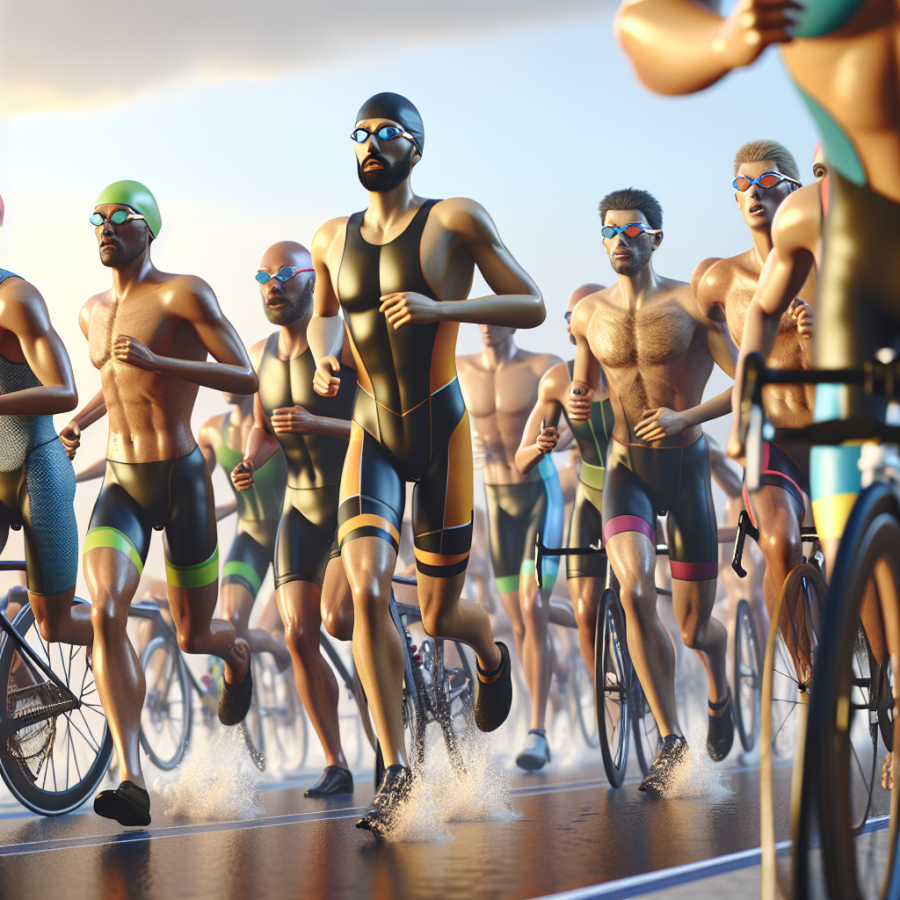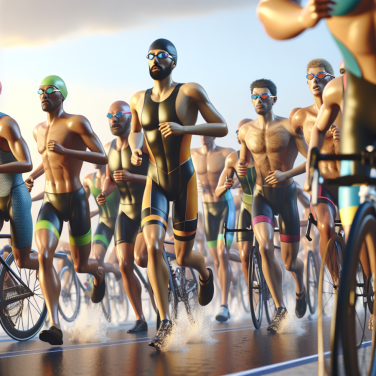Race Day Tactics: Strategic Approaches to Mastering Swim, Bike, and Run Stages
Race Day Tactics are critical for optimizing performance across the three disciplines of a triathlon: swimming, biking, and running. Each stage requires a unique strategic approach to conserve energy, maintain speed, and ultimately cross the finish line with the best possible time.
Strategic Approaches to Mastering the Swim Stage:
- Start Position: Consider your swimming strength and choose your start position accordingly. Stronger swimmers may want to be at the front to avoid the crowd, while beginners might prefer starting at the back or to the side to avoid the initial rush.
- Drafting: When possible, draft behind a slightly faster swimmer. This technique can conserve energy by reducing water resistance.
- Sighting: Frequently look ahead to navigate and stay on course. This prevents swimming extra distance, which wastes time and energy.
- Pacing: Start at a comfortable pace to avoid early exhaustion. Conserve energy for the latter part of the swim and the upcoming bike stage.
Strategic Approaches to Mastering the Bike Stage:
- Bike Fit and Position: Prior to race day, ensure your bike is properly fitted to maximize efficiency and comfort. A good bike fit helps prevent injury and fatigue.
- Aerodynamics: Use a triathlon-specific bike if possible and maintain an aerodynamic position to reduce wind resistance and improve speed.
- Power Distribution: Use a bike computer with a power meter to maintain a consistent effort, avoiding burning out on hills or pushing too hard into the wind.
- Nutrition and Hydration: The bike stage is the best time to eat and drink. Plan your nutrition strategy beforehand, and practice it during training.
Strategic Approaches to Mastering the Run Stage:
- Transition: Run the first part of the course at a moderate pace to let your legs adjust after cycling. This can prevent early fatigue and injury.
- Cadence: Maintain a quick and light step to conserve energy over time. A higher cadence can also lessen the impact on your legs.
- Course Reconnaissance: Familiarize yourself with the run course beforehand, knowing where the hills and aid stations are can help manage your energy and hydration better.
- Mental Tactics: Stay positive and break the run into smaller segments to manage fatigue and maintain pace. Use landmarks as mini-goals to keep focused and moving forward.
Crafting a race day strategy that capitalizes on proper pacing, efficient technique, and mental preparation will lead to a successful triathlon performance.
Read also:
Kilikiti: Exploring Samoa's Traditional Cricket Game
Maximizing Performance: A Detailed Plan for Triathlon Training
Maximizing Performance: A Detailed Plan for Triathlon Training
Triathlon training is a complex and multifaceted undertaking that requires a well-thought-out strategy to maximize performance. The key to successful triathlon training lies in understanding the physiological demands of each discipline – swimming, cycling, and running – and designing a program that enhances your abilities in all three while also preventing injury and burnout.
A triathlete's training plan should be periodized, meaning it is divided into specific phases, each with a particular focus. These phases typically include base building, build phase, peak phase, and taper phase. Here is a closer look at what a detailed training plan might entail:
Base-Building Phase:
The base-building phase is a critical period where you develop endurance and aerobic capacity. Training during this phase will often be at a lower intensity but of longer duration. The goals are to increase your muscular and aerobic endurance, establish efficient technique, and prepare your body for more intense training later on. Typically, this phase will last for several months.
- Swim sessions should focus on drills that improve technique, efficiency, and endurance.
- Bike workouts should consist of steady-state rides with an emphasis on maintaining consistent cadence and power output.
- Run training should prioritize endurance, incorporating long and easy runs with a focus on maintaining good form.
Build Phase:
Once a solid base is established, the build phase ramps up the intensity with more challenging workouts designed to increase your strength and speed.
- Swim training will include more interval sets and sprint workouts to build speed and power in the water.
- Cycling efforts should introduce hill repeats and tempo rides that push lactate threshold boundaries.
- Running sessions will include interval training with track workouts, hill sprints, and fartlek sessions to improve speed and running economy.
Peak Phase:
The peak phase is intended to fine-tune your performance and bring you to your top condition just in time for a race. Training during this phase will be highly specific to race conditions, with brick workouts (combined swim-bike, bike-run, or swim-bike-run sessions) and race simulations playing a significant role.
- Swim workouts will implement pacing strategies and open water techniques if applicable.
- Cycling sessions will focus on maintaining race-specific intensities and practicing nutrition strategies.
- Running at this stage will often include brick workouts, allowing you to adapt to the feel of running off the bike.
Taper Phase:
The taper is a reduction in training volume and intensity leading up to race day.




